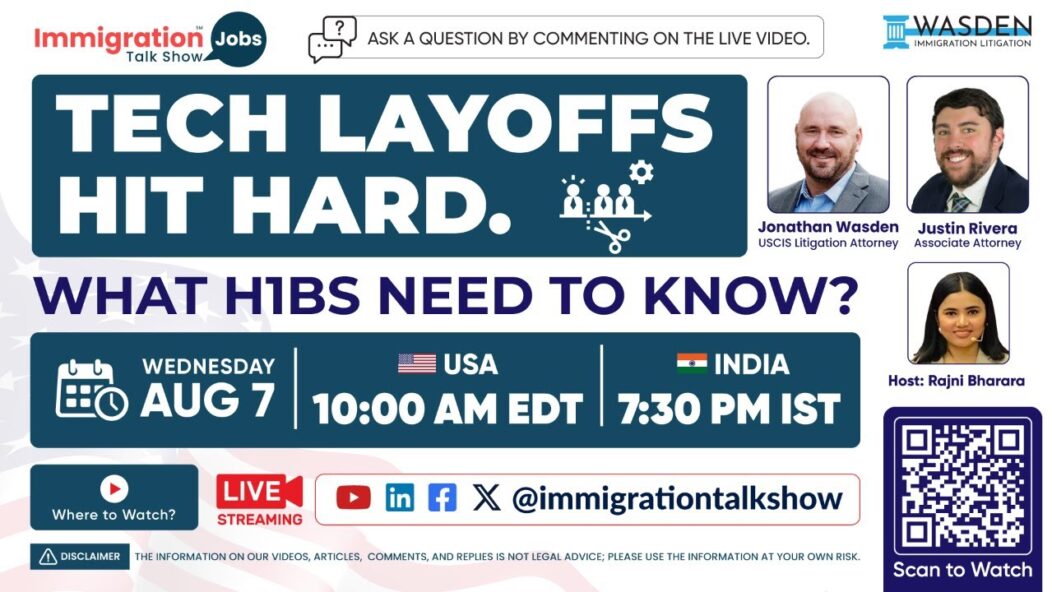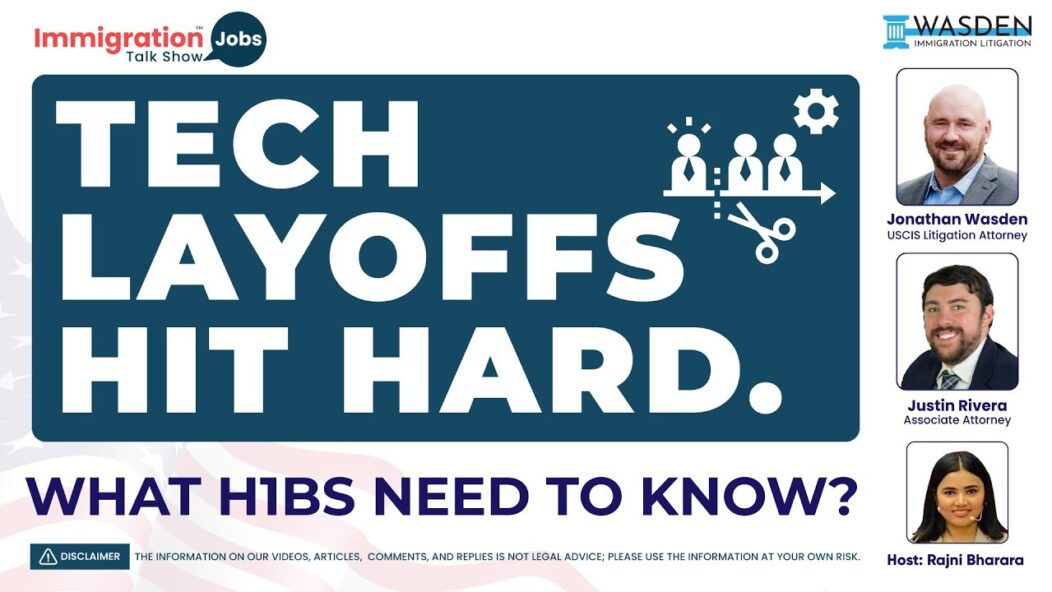Understanding the process of employment eligibility verification is crucial for both employers and employees in the United States. Form I-9, issued by the U.S. Citizenship and Immigration Services (USCIS), plays a vital role in this verification process. This article will break down the essentials of Form I-9 and provide insights on how to navigate its requirements effectively.
Authors: Jonathan Wasden & Justin Rivera, Immigration Attorneys
Key Takeaways
- Form I-9 is required for all new hires to verify their eligibility to work in the US.
- Both employees and employers must fill out the I-9 form accurately and on time.
- E-Verify is an electronic system that helps confirm the information provided in Form I-9.
- Common mistakes can lead to fines and penalties, so it’s important to double-check documentation.
- Regular audits and training can help employers stay compliant with USCIS regulations.
Understanding the Purpose of Form I-9
Form I-9 is a crucial document that helps employers verify that their employees are legally allowed to work in the United States. Federal law requires that every employer who hires someone must complete this form. It is filled out by both the employee and the employer, ensuring that the employee’s identity and work authorization are confirmed through proper documentation.
Role of USCIS in Employment Verification
The U.S. Citizenship and Immigration Services (USCIS) plays a key role in overseeing the employment verification process. They provide guidelines and resources to help employers understand their responsibilities regarding Form I-9. This ensures that the hiring process is compliant with federal laws.
Legal Requirements for Employers
Employers must follow specific legal requirements when completing Form I-9:
- Complete the form for every new hire.
- Ensure it is filled out within three days of the employee’s start date.
- Retain the form for a specified period after employment ends.
Importance of Accurate Documentation
Accurate documentation is vital for several reasons:
- It protects employers from legal penalties.
- It ensures that only eligible individuals are hired.
- It helps maintain a fair hiring process.
Properly completing Form I-9 is not just a legal obligation; it is essential for fostering a trustworthy workplace environment.
Steps to Complete Form I-9
Employee Responsibilities in Section 1
The first step in completing Form I-9 is for the employee to fill out Section 1. This section requires the employee to provide:
- Full name
- Address
- Date of birth
- Social Security number (if applicable)
- Email address and telephone number
Additionally, the employee must confirm their eligibility to work in the U.S. by selecting one of the following categories:
- U.S. citizen
- Noncitizen national
- Lawful permanent resident
- Alien authorized to work in the U.S.
If the employee is an alien authorized to work, they must also provide their alien registration number or Form I-94 admission number. The employee must sign and date the form, acknowledging that false statements can lead to serious consequences.
Employer Duties in Section 2
After the employee completes Section 1, the employer must review the employee’s documents in Section 2. This should be done within three days of the employee’s start date. The employer needs to:
- Verify the documents presented by the employee.
- Complete the appropriate part of Section 2 based on the type of documents reviewed.
- Optionally, make copies of the documents for their records.
The documents fall into three categories:
- Documents that verify both identity and employment authorization (e.g., U.S. Passport, green card)
- Documents that verify identity only (e.g., driver’s license)
- Documents that verify employment authorization only (e.g., birth certificate)
Reverification and Updates in Section 3
Section 3 is used for reverification when an employee is rehired or when their work authorization needs to be updated. The employer must:
- List the employee’s name and rehire date.
- Provide information about any new documents establishing work authorization if the previous one has expired.
- Ensure the employee signs under penalty of perjury that the documents are genuine.
Regularly reviewing and updating I-9 forms is crucial to avoid penalties. This page provides a comprehensive guide for employers on avoiding I-9 penalties, emphasizing the importance of the I-9 form in verifying employee eligibility to work in the U.S.
By following these steps, both employees and employers can ensure compliance with the employment eligibility verification process.
Utilizing E-Verify in the Verification Process
How E-Verify Complements Form I-9
E-Verify is a helpful tool that works alongside Form I-9 to confirm if an employee is eligible to work in the U.S. This system checks the information from Form I-9 against federal databases. It helps employers ensure they are hiring individuals who are legally allowed to work.
Mandatory vs. Voluntary Use of E-Verify
In some cases, using E-Verify is required, especially for federal contracts. Here are some key points:
- Mandatory for federal contractors.
- Voluntary for most employers, but recommended for compliance.
- Some states have laws that require its use.
Benefits of Using E-Verify
Using E-Verify has several advantages:
- Reduces the risk of hiring unauthorized workers.
- Streamlines the verification process, making it faster.
- Provides peace of mind for employers regarding compliance.
E-Verify is an important step in ensuring that your hiring practices are compliant with federal laws. Regular use can help avoid potential fines and penalties.
Common Mistakes and How to Avoid Them
Incorrect Documentation Submission
One of the biggest errors employers make is submitting the wrong documents. This can lead to serious issues with compliance. To avoid this mistake:
- Always check that the documents provided match the requirements of Form I-9.
- Ensure that all documents are current and valid.
- Keep a checklist of acceptable documents to streamline the process.
Failure to Meet Deadlines
Another common mistake is not completing the I-9 form on time. Employers must verify employment authorization within three business days of hiring. To prevent this:
- Set reminders for deadlines related to Form I-9.
- Train HR staff to prioritize timely completion.
- Use digital tools to track and manage deadlines effectively.
Consequences of Non-Compliance
Failing to comply with I-9 regulations can result in hefty fines and penalties. Employers must understand the risks involved. Here are some potential consequences:
- Fines ranging from $250 to $2,000 per violation.
- Possible criminal charges for repeated violations.
- Damage to the company’s reputation, affecting future hiring.
To maintain compliance, it’s essential to regularly review I-9 forms and stay updated on immigration laws. This proactive approach can help avoid costly mistakes and ensure a smooth hiring process.
By being aware of these common mistakes and implementing best practices, employers can significantly reduce the risk of non-compliance and protect their business.
Preparing for Audits and Inspections
Conducting Internal I-9 Audits
To ensure compliance with I-9 regulations, it’s essential to conduct regular internal audits. Here are some steps to follow:
- Review all I-9 forms for accuracy and completeness.
- Check that all required documents are attached and valid.
- Identify any discrepancies and correct them promptly.
Training HR Personnel
Training your HR team is crucial for maintaining compliance. Consider the following:
- Provide regular training sessions on I-9 requirements.
- Update staff on changes in immigration laws.
- Ensure they understand the importance of accurate documentation.
Responding to DHS and ICE Audits
When facing audits from the Department of Homeland Security (DHS) or Immigration and Customs Enforcement (ICE), be prepared:
- Have a clear protocol for responding to audit requests.
- Keep all I-9 forms organized and easily accessible.
- Establish a communication plan to inform employees about the audit process.
Preparing for regulatory audits and inspections is critical to maintaining compliance and protecting the reputation of your medical device company.
By following these practices, you can significantly reduce the risk of non-compliance and ensure your business is ready for any audits that may arise.
Legal Implications of Non-Compliance
Fines and Penalties for Employers
Employers who do not follow the rules for Form I-9 can face serious financial penalties. The fines can vary based on the type of violation. Here’s a quick overview of potential fines:
Type of Violation Fine Amount
Minor paperwork errors $250 – $2,000 per form
Serious violations $2,000 – $5,000 per form
Repeat offenders Up to $10,000 per form
Impact on Federal Contracts
Non-compliance can also affect a company’s ability to secure federal contracts. If a business is found to be non-compliant, it may lose its eligibility to bid on government projects, which can significantly impact its revenue.
Legal Recourse for Employees
Employees who are affected by non-compliance may have legal options. They can report employers to the authorities, which can lead to investigations and further penalties for the employer. Employers must ensure that all parts of Form I-9 are properly completed to avoid these issues.
It’s crucial for employers to stay informed about I-9 compliance to protect their business and workforce. Regular training and audits can help prevent costly mistakes.
Best Practices for Maintaining Compliance
Regular Review and Updates of I-9 Forms
To ensure compliance with employment eligibility verification, it is essential to regularly review and update I-9 forms. This includes:
- Conducting internal audits to check for accuracy.
- Updating forms to reflect any changes in immigration laws.
- Ensuring all employees have completed their forms correctly.
Secure Storage of Documentation
Keeping I-9 documentation secure is crucial. Employers should:
- Store I-9 forms in a locked file cabinet or a secure electronic system.
- Limit access to authorized personnel only.
- Maintain confidentiality to protect employee information.
Staying Informed on USCIS Guidelines
Employers must stay updated on the latest guidelines from USCIS. This can be achieved by:
- Subscribing to USCIS newsletters.
- Attending training sessions on I-9 compliance.
- Consulting with legal experts to understand changes in immigration laws.
Remember, maintaining compliance is not just about avoiding penalties; it’s about fostering a fair and legal workplace. By following these best practices, employers can ensure they are hiring legally authorized workers and protecting their business from potential legal issues.
To keep your business compliant, it’s essential to follow the latest rules and regulations. Regularly review your processes and stay updated on any changes in the law. For more detailed guidance and support, visit our website today!
Conclusion
In summary, understanding how employment eligibility verification works is crucial for both employers and employees. The Form I-9 is a key document that confirms a person’s right to work in the U.S. It’s important for employers to fill it out correctly and on time, as mistakes can lead to serious penalties. Using E-Verify can help make this process smoother by checking the information against government records. By staying informed and compliant with these requirements, businesses can avoid fines and ensure they hire qualified workers. Remember, keeping accurate records and regularly reviewing them is essential to maintaining compliance and protecting your business.
Frequently Asked Questions
What is Form I-9 and when should it be filled out?
Form I-9 is a document that employers and new employees must fill out to show that the employee is allowed to work in the U.S. This form should be completed on the first day of work or within three days after starting.
How long do employers need to keep Form I-9?
Employers must keep Form I-9 for three years after hiring an employee or for one year after the employee leaves, whichever is longer.
What is E-Verify and do all employers have to use it?
E-Verify is an online system that helps employers check if their employees can work in the U.S. Not all employers have to use it; it depends on state laws and whether they have federal contracts.
What happens if an employer doesn’t follow I-9 rules?
If employers don’t follow I-9 rules, they can face fines or even legal trouble. The penalties can be serious, depending on how bad the violation is.
How can employers prepare for audits from immigration authorities?
Employers should regularly check their I-9 forms and train their HR staff to understand the rules. Keeping organized records and fixing any mistakes can help during audits.
Why is it important to avoid hiring people who can’t work legally?
Hiring someone who can’t work legally can lead to fines and other legal problems for the employer. It’s essential to make sure all employees are authorized to work.
How useful was this post?
Click on a star to rate it!









